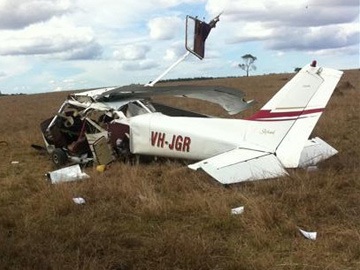
An accident involving a Cessna 172N highlights the importance of lodging a Search and Rescue Time (SARTIME) Plan or flight note before flying.
The accident occurred on 7 November 2012, when the pilot of a Cessna 172N crashed his aircraft in a remote paddock near Brisbane while practising for a flight test. The pilot had not submitted a flight plan, nor had he left a flight note with a responsible person or lodged a Search and Rescue Time (SARTIME) with Airservices Australia. The pilot reported having little memory of the flight but said he had planned to fly to the southern training area to practise holding heading and altitude for his upcoming flight test.
Basic safety preparation before each flight could save your life and, at the very least, speed up your rescue.
Following the accident the pilot recalled regaining consciousness and crawling to the aircraft to broadcast a distress call on the aircraft radio. The aircraft was fitted with a personal locator beacon (PLB) but the pilot was unable to locate it after the accident to activate it.
An aircraft in the area reported hearing two faint mayday calls on the Brisbane Centre Frequency. These were not heard by the Brisbane Centre. The area controller requested the pilot of another aircraft in the area to track south from Kagaru to investigate. At about 1410, the crashed Cessna was spotted in a paddock. The pilot was the only person on board and had suffered severe injuries as a result of the accident. The ATSB assessed that the aircraft had been airborne for around 45 minutes, placing the accident about 3 hours before the aircraft was located.
The flight had not been authorised by an instructor prior to the flight. The flying school has now amended their procedures to ensure that no student pilot is provided with aircraft keys before the flight is authorised.
Read the report: Collision with terrain involving Cessna 172N, VH-JGR, near Kagaru, Queensland, on 7 November 2012


